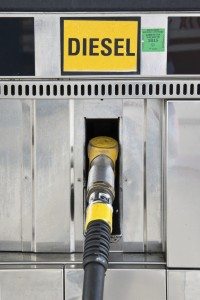Although many of us wish we could be on the road in our RVs more often than not, the truth is that our motorhomes often live a double-life
in which they spend short periods traveling from one place to another, then sit idle for weeks or sometimes months at a time with little to no use. This can become an issue for your RV’s fuel source, as gas and diesel both degrade over time, which can gum up your engine and make it difficult to start. One of the simplest ways to keep your fuel from going bad during downtime is by using an additive or stabilizer, which will help you safely store your vehicle.
How does a fuel stabilizer work?
Fuel can break down in as little as 30 to 60 days, which can cause varnish or corrosion build-up in your system. When added to fresh gasoline or diesel, a stabilizer can keep your fuel fresh for as long as an entire year, which will not only save you the headache of a gunked-up engine, but also keep you from wasting money by draining your tank each time you need to store your vehicle. These additives often include metal de-activators, which stop the chemical reactions caused by dissolved metals in your fuel, as well as corrosion inhibitors. These elements help guard your metal engine parts from breaking down, ensuring your engine starts right up after extended time off the road.
Gasoline additives
Your gasoline oxidizes and degrades within mere weeks of non-use, and ironically, newer gasoline formulas engineered to be cleaner actually break down even faster than those used years ago. The introduction of ethanol has also decreased gasoline’s shelf life, as it attracts moisture from the air, which is detrimental to your metal mechanisms. Many fuel stabilizer brands now produce additives specifically designed to protect your engine from ethanol-related damage to prevent corrosion, remove water, and clean fuel injectors. Simply add one ounce of stabilizer for every 2 ½ gallons of gasoline in your tank to keep it safe until you’re ready to start it up again.
Diesel additives
Although diesel doesn’t necessarily break down the same way gasoline does, it does pose storage issues of its own. “Diesel algae” (although not scientifically an algae) is a microbial growth that develops in the presence of certain bacteria, yeasts, and molds which are present in diesel. Once the growth appears, it consumes the fuel, leaving behind an acidic sludge in your tank that gums up your engine. The best way to avoid this issue is by using a biocide, which rids your fuel system of any microbial contamination which may turn into diesel algae. Typically, the application rate for diesel conditioners is a ratio of 1:500, meaning about 1 ounce per 3 ½ gallons of diesel, but confirm the amount you need based on the direction of the brand you purchase.
Using a fuel additive or conditioner can help you achieve optimum performance, even after a long travel break. To help you stay up-to-date with your fuel tank maintenance and other aspects of RV up-keep, utilize Maintain My RV’s online maintenance logbook and checklist to track needed services and help ensure your motorhome runs perfectly every time.

